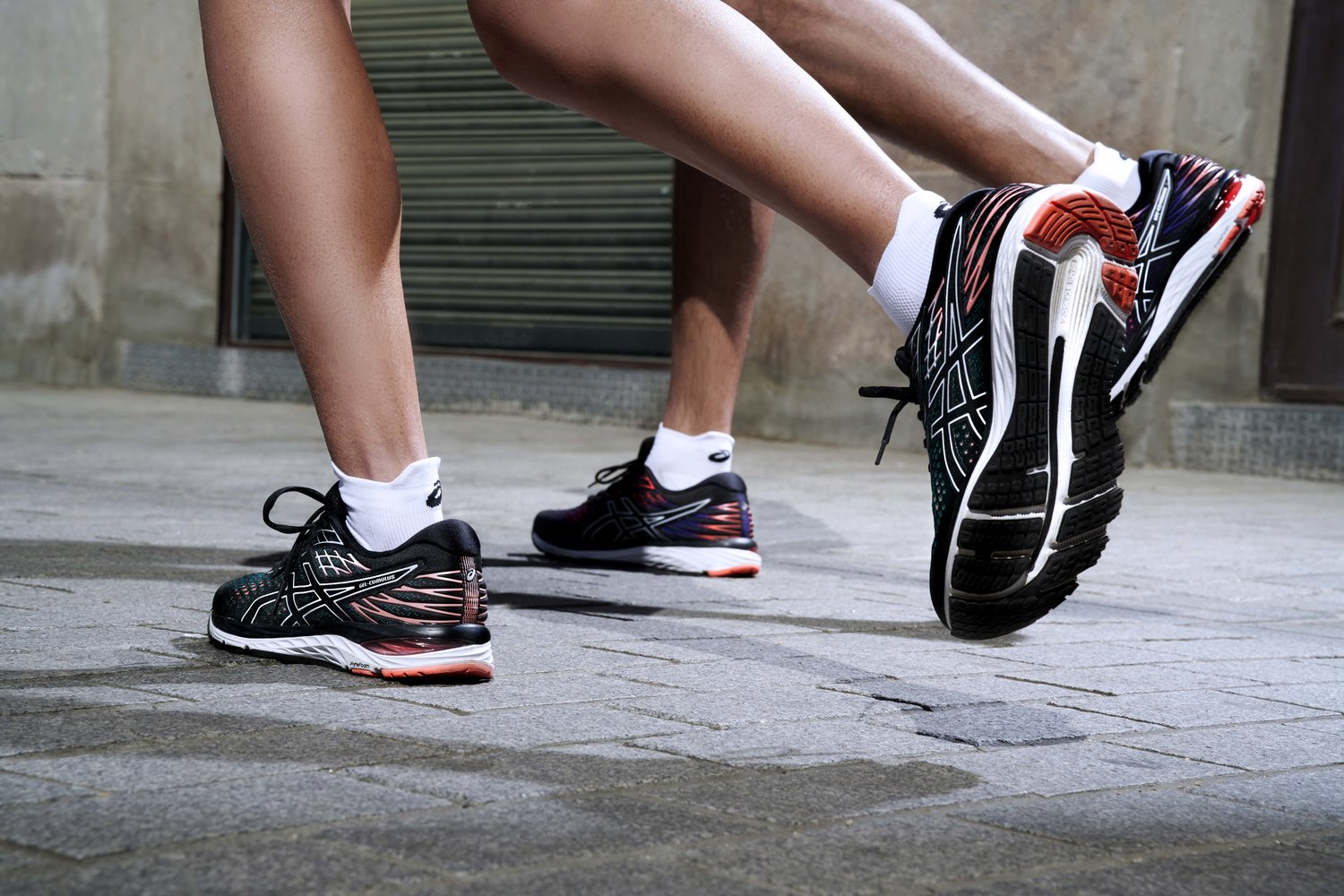As we recently watched both seasoned and amateur athletes give their best in the biggest marathon in the world, the London Marathon, our running aspirations were reignited yet again.
Whether you want to run just for fun or are already preparing for the next GNR, a pair of men’s or women’s trainers will be your most essential piece of kit.

The right type of shoe can ensure your comfort and safety and a sprinkle of glam while you make an appearance at a national event or in front of your neighbour’s house.
You might even be able to claim a great finishing position but only with the right pair of running shoes.
Think of the successes of this year’s winner Marc Scott, and Kenyan Mary Keitany, who is the current women’s record holder for her Great North Run finish in 2014. They trained, they sweated, and they were fashionably on time to grab their medals.
If you want to learn how to run in their shoes, follow these tips on choosing the most comfortable yet stylish women’s trainers that will guarantee you a stellar action shot or a head-turning compliment at the very least.
What is your running style?
Every runner has their own running style, but we often don’t take it into consideration when choosing our next pair of trainers.
Learning about how your feet move and land can help you prevent an injury and optimise your performance.
Technically speaking, you can be a supinator, overpronator, or neutral pronator when it comes to your running style.
Pronation is the natural motion of your foot during walking and running, and it indicates the inward roll of the foot (pronation) as the outside part of the heel hits the ground. Some people pronate more (overpronation) or less (supination) than others.
Your pronation pattern dictates the way you run, and when paired with an ill-suited shoe, it can result in injuries.
A recent study suggests that novice runners with slight pronation are less likely to experience a sports trauma than those with high supination or overpronation.
Finding special trainers to fit your running style means you can enjoy the half-marathon while being comfortable, safe, and trendy.
Should you get a gait analysis?
A great way to match your degree of pronation with the right shoe type is by doing a gait analysis.
Through a set of tests, which usually involve walking on a treadmill, you can determine not only your pronation level but also identify other issues like slow cadence, a lack of flexibility, and a lack of core strength, which are vital when preparing for the run of your life.
You can book in a free gait analysis at your local running speciality store or by visiting a podiatrist.
If you don’t feel like walking the extra mile for it, you can even test your pronation from the comfort of your own home by looking at your footprint.
Should your foot appear flat, it’s likely that you are an overpronator, and if your footprint doesn’t have an imprint of your arch, it means that you might be a supinator. Natural pronation occurs if you see about half of your arch.
Whether you’re a novice or an expert runner, you should still get a gait analysis because things might have changed since your last result.
How wide is your foot?
Generally speaking, women’s shoes are narrower than men’s ones and are usually classified as something called a width A.
Most brands will have this mentioned in the product description, but if they don’t, then you should assume that the shoe is width A.
However, some women have wider feet, and thankfully, the fashion industry caters well for them. What is usually referred to as a wide fit in retail stores is technically classed as width D, and that’s also the standard men’s width in running shoes.
If your shoe is too narrow and your foot rubs against the side of the trainer, you will not only be uncomfortable from the start, but you might not even make it to the end. That is why it’s best to listen to your body for comfort and trust what feels right.
How fast and how long do you want to run for?
For seasoned athletes, it’s best to choose a lightweight racing shoe that provides for ultimate speed and efficiency.
You should only decide on such a pair of trainers if you’re confident in your abilities and have trained well – it can really take its toll on you if you’re not prepared.
But for amateur runners, things like design, colour, and overall look also come into play.
How stunning would you look in your tastefully coordinated outfit and women’s trainers? Well, that’s a definite win!
When choosing our next running shoes, it’s important to consider what our goals and running style are.
But what’s more exciting is finding the design that makes our heart skip a bit so that we never skip a training session. May you run in style!





